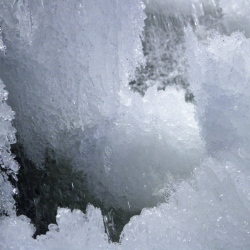
About 100 million years ago, dinosaurs roamed a forest-covered Antarctica. Temperatures were about 50 degrees Fahrenheit, according to proxy records. Carbon dioxide was present in the atmosphere at higher levels than present day. This period, known as "Cenomanian," poses a problem for today’s computer climate models.
These models are algorithmic representations of our climate used by scientists, and they are key for understanding and planning how to deal with a warmer world. Climate models can also be run "backward" to re-create past climate changes. When Christopher Poulsen, a paleoscientist at the University of Michigan, tried to run climate models to re-create the Cenomanian climate, he ran into a problem that has been puzzling scientists for three decades.
Climate models show that Antarctica in the Cenomanian had subzero temperatures too cool for dinosaurs. But temperature records, analyzed using cores and other proxies, suggested Antarctic temperatures were much higher.
The models, then, were getting the Cenomanian wrong. Some factor, not represented in climate models, had played an important role in the climate 100 million years ago and warmed Antarctica. The troubling undercurrent to the puzzle was: Could that factor also be affecting future climate change? The past holds the answer to this problem.
Poulsen and his colleagues found that there was indeed a factor that warmed the Cenomanian climate: oxygen. Carbon dioxide is well-known as a greenhouse gas, as are methane, water vapor, nitrous oxide and more. But oxygen has not been implicated in warming the planet until now.
The study finds that when oxygen levels in the atmosphere drop, global temperatures get hotter, and vice versa.
